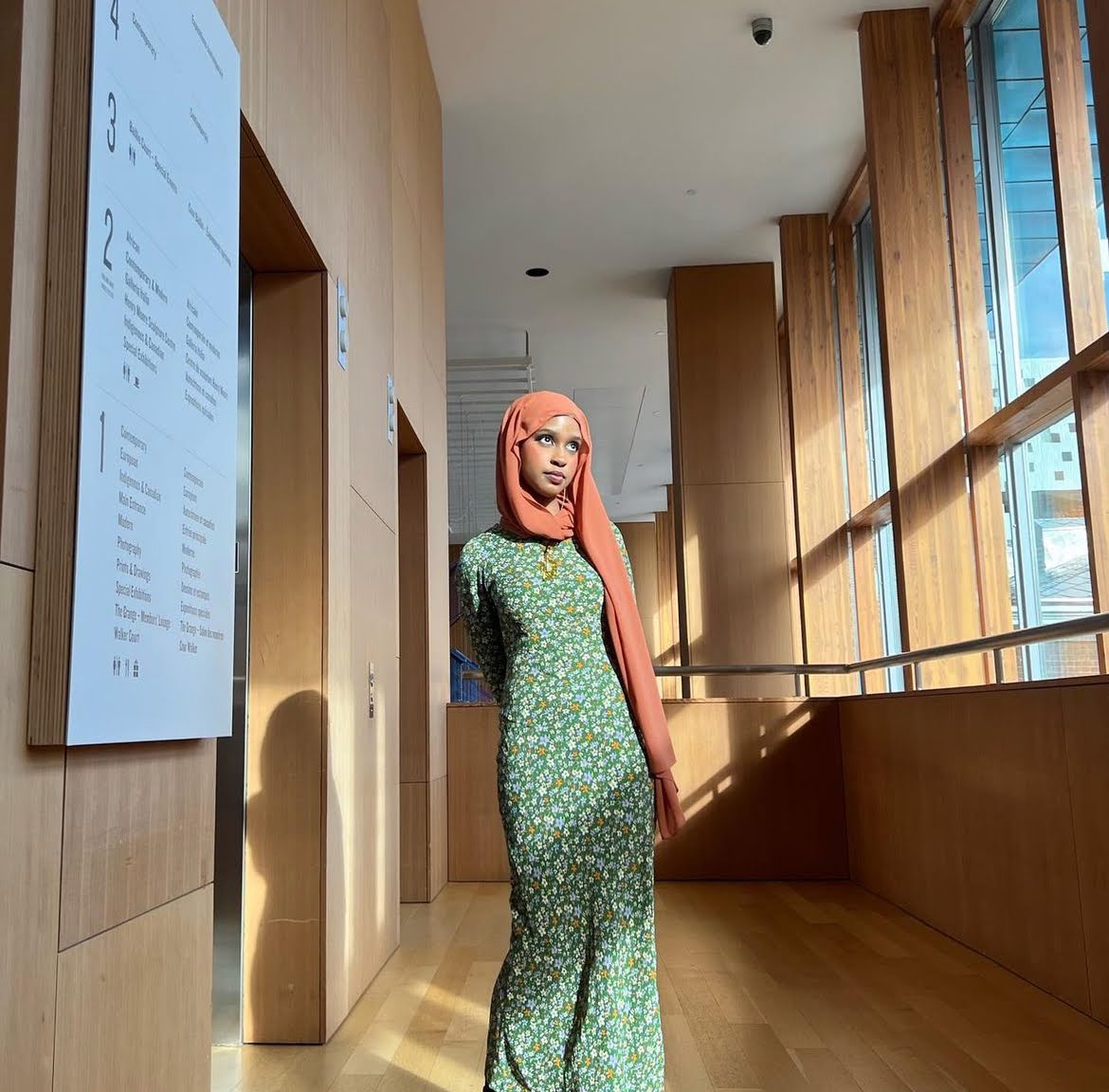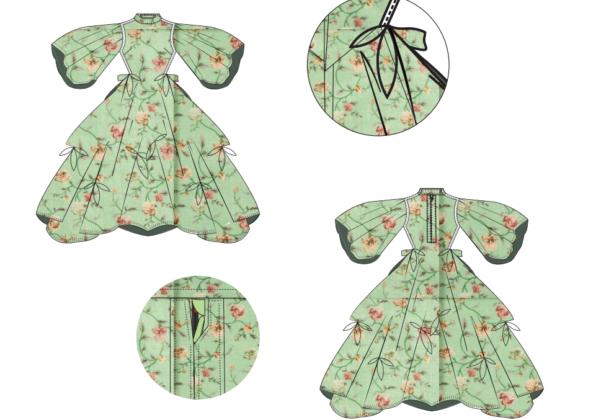Anisa Sarina, a third-year fashion student at Toronto Metropolitan University (TMU) who grew up in Ottawa, said the most important element of her designs is that they honour her identity.
She said being the only Somali Muslim fashion student in her program brings uniqueness to her designs, but also presents challenges.
The Charlatan spoke with Sarina to learn more about her fashion school experiences and the importance of staying true to herself.

Anisa Sarina (AS): My mom says I’ve always been into fashion, always mixing and matching. I started practising in high school. There is this academy that offers fashion tutoring in Ottawa called Richard Robinson. I learned illustration there and then began embroidering. It was just a hobby. Everybody would tell me I was going into fashion and I couldn’t believe them. But here I am!
TC: How would you describe your current work?
AS: Feminine, light-coloured, whimsical and very loose-fitting. My favourite colour palettes have to be any mixture with pink: green and pink, yellow and pink. I love pink.
I’ve been following Minju Kim from Project Runway and Next in Fashion for a while. Her designs are super modest and fairy-like. I love them and gain inspiration from them.
TC: What are some challenges you face in your program?
AS: The fashion program is very small. One thing I noticed is feeling alienated as the only Black Muslim, or visibly Black Muslim, in my program. It’s such a disconnect. There have been certain designs that my teachers have asked me to make that I don’t think translate well for me as a Muslim, not aligning with my values.
On top of that, it’s just you. So you feel like the black sheep.
TC: Do you have an example?
AS: For one project we had to make specific garments for our project partners. By the due date, we’d come in wearing that garment and then the professor would measure us, make sure the garments were properly fitting and then correct any mistakes. This process included my male professor pinching the fabric.
To preface, this is his job. I don’t blame him and I should have said something. But religiously, men and women aren’t supposed to touch unless married.
I think at that moment, I was afraid no one else would relate to me if I spoke up and would just think I’m weird. I’m sure if I did tell him, he would have understood, but I didn’t want to stick out.
TC: Were there any other instances where you felt your identity wasn’t understood?
AS: One day, another professor told me I was skipping a bunch of her classes. I was confused because I showed up early to every single class. At the same time, it’s a university class: you can go eat or have a smoke break, come back 15 minutes later and nobody’s gonna hold it against you.
Her class would interfere with my prayer time, so during the break I would leave and then return. I asked if she didn’t remember me coming back. She said that I could wait and the prayer could wait. And I was like, that’s not how it works for me.
TC: How do you think the university could help?
AS: The TMU guiding principles for our program are decolonization, inclusion and sustainability. The university should really examine their guiding principles and do a better job of incorporating them.
TC: What projects are you working on right now?
AS: Recently, I had the opportunity with this nonprofit organization from the University of Toronto, UTSC Charity Fashion. They wanted to collaborate with designers from all over the city. I expressed interest in doing bridal, so I’m currently working with them. I’d like to start commissioning and making Somali bridal dresses in the near future.
TC: Do you have advice for those with a similar background entering your program?
AS: My advice to another Muslim girl or another Black girl who’s just joining the fashion program is to not lose yourself.
It’s easier said than done. I had a phase where I found it hard to show people who I was. But, you know what’s so interesting? The moment I started becoming myself, the more I connected with my professors and the fashion community.
Authenticity matters in my work as well. I want my work to reflect what I would wear. I wouldn’t make something that I wouldn’t wear in person. I need it to reflect me.
This interview has been edited for length and clarity.
Featured graphic provided by Anisa Sarina.







